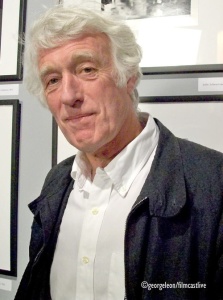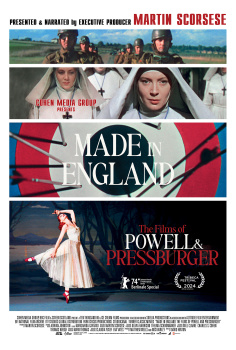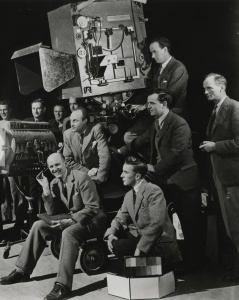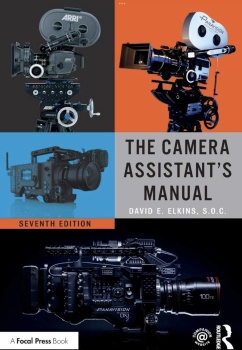Cinematographers invoke recent past with visual references


 A period movie doesn't (necessarily) need to look like that period so much as feel like that period," Grau says of capturing "Single Man's" L.A. imagery circa 1962. "The way you evoke time and place is by the way that time and place felt." Although Grau was only 27 during the film's production, he managed to re-create the era by exploring various cameras and lenses until ultimately deciding on the Panavision Primo line of lenses for their "sharpness and precision."
A period movie doesn't (necessarily) need to look like that period so much as feel like that period," Grau says of capturing "Single Man's" L.A. imagery circa 1962. "The way you evoke time and place is by the way that time and place felt." Although Grau was only 27 during the film's production, he managed to re-create the era by exploring various cameras and lenses until ultimately deciding on the Panavision Primo line of lenses for their "sharpness and precision."

 Instead of sharpness, de Borman went for a softer feel to capture the essence of 1961 London for "An Education." "Lenses were critical to this film," the d.p. says. "Along with an Arriflex camera, I used old-fashion Cooke S2 lenses, which have a softness to their focus that newer lenses just don't have. Now everything is incredibly sharp and very contrasting, while the Cooke S2s not only gives beautiful portraiture but also immediately gave the project a period feel."
Instead of sharpness, de Borman went for a softer feel to capture the essence of 1961 London for "An Education." "Lenses were critical to this film," the d.p. says. "Along with an Arriflex camera, I used old-fashion Cooke S2 lenses, which have a softness to their focus that newer lenses just don't have. Now everything is incredibly sharp and very contrasting, while the Cooke S2s not only gives beautiful portraiture but also immediately gave the project a period feel."

 Instead of focusing on camera equipment, Deakins used lighting to capture "A Serious Man's" Midwestern 1967 suburbia. "Photographically I don't really like doing anything that shouts period movie," says the d.p., who used an Arriflex 535 B. "I also don't want the photography to overcome the characters. So I approached this script in a very straightforward way (in order to) discover the mood of the story, which dictates how I shoot and light." It was through lighting and in collaboration with pic's directors Joel and Ethan Coen, as well as set and costume designers, that Deakins found ways to evoke the film's undercurrents of period psychedelia.
Instead of focusing on camera equipment, Deakins used lighting to capture "A Serious Man's" Midwestern 1967 suburbia. "Photographically I don't really like doing anything that shouts period movie," says the d.p., who used an Arriflex 535 B. "I also don't want the photography to overcome the characters. So I approached this script in a very straightforward way (in order to) discover the mood of the story, which dictates how I shoot and light." It was through lighting and in collaboration with pic's directors Joel and Ethan Coen, as well as set and costume designers, that Deakins found ways to evoke the film's undercurrents of period psychedelia.Joel and Ethan wanted an over-the-top, orange, '60s look for this one particular scene when Larry (the film's main character) goes to his neighbor's house," Deakins explains. "So the set designer created this very orange living room and the actress was put in a very orange dress, which was perfect because I was using an orange light to exaggerate the look and feel of the era even further."


 While Beebe used theatrical lighting to achieve the contemporary fantasy sequences of "Nine," he avoided any tricky illumination when it came to creating the film's 1960s Rome sequences. Using a combination of Panavision and Arriflex cameras, Beebe made extensive use of black-and-white photography as a "nod to the period," but made sure to stay away from imitating Italian cinema from the era. I was looking for the spirit of 1960s Italy, but never wanted to replicate any classic cinema moments, including Fellini's (whose "8 ½" inspired "Nine). Instead I wanted the film to reference the '60s, but not feel like it was made in the '60s."
While Beebe used theatrical lighting to achieve the contemporary fantasy sequences of "Nine," he avoided any tricky illumination when it came to creating the film's 1960s Rome sequences. Using a combination of Panavision and Arriflex cameras, Beebe made extensive use of black-and-white photography as a "nod to the period," but made sure to stay away from imitating Italian cinema from the era. I was looking for the spirit of 1960s Italy, but never wanted to replicate any classic cinema moments, including Fellini's (whose "8 ½" inspired "Nine). Instead I wanted the film to reference the '60s, but not feel like it was made in the '60s."

 Also avoiding any tricks was Stern, who re-created South Africa circa 1990- 95 for "Invictus." There were subtle differences in the period that needed to be conveyed, so I, as always, tried to start from a point of simplicity and stay there throughout," says Stern, who stuck with the same equipment that he has been using for years -- Panaflex cameras and anamorphic lenses. "I tend to rely on books with images from the period that are not necessarily about the film, but are of the time."
Also avoiding any tricks was Stern, who re-created South Africa circa 1990- 95 for "Invictus." There were subtle differences in the period that needed to be conveyed, so I, as always, tried to start from a point of simplicity and stay there throughout," says Stern, who stuck with the same equipment that he has been using for years -- Panaflex cameras and anamorphic lenses. "I tend to rely on books with images from the period that are not necessarily about the film, but are of the time."Stern arrived on location two months prior to filming and was simultaneously guided during pre-production by looking at photographs from the era, but the d.p. admits, "Typically things sort of take care of themselves once the actors started working and everything comes together in terms of location and set design."
Courtesy of Addie Moorfot -Variety


























































